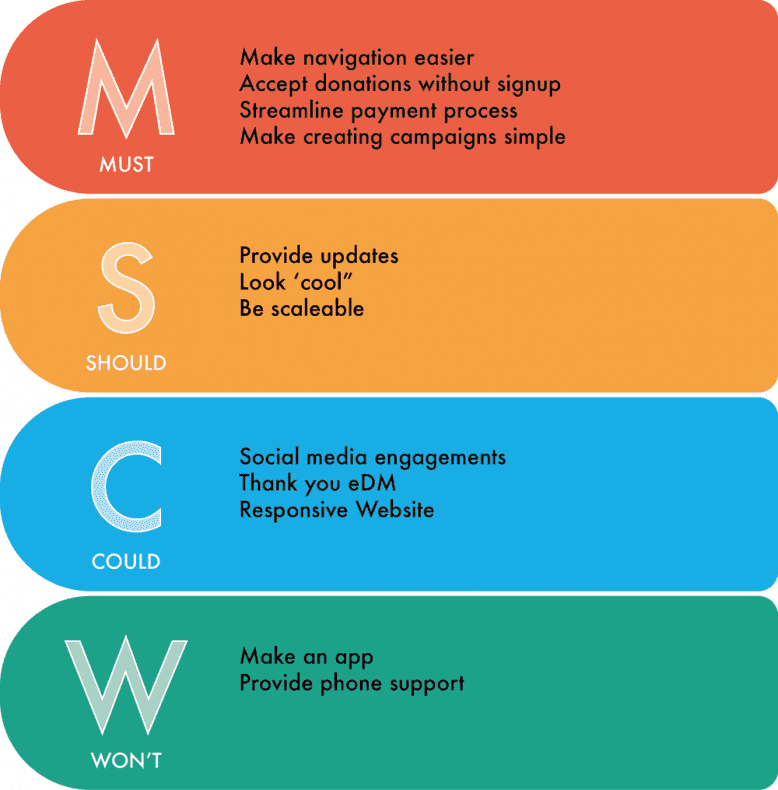MoSCoW is a procedure of prioritization that is utilized in business management, analysis and development of software so that stakeholders better comprehend the resourcefulness of each task in a given project. It also aids the stakeholders in better understanding the importance of timely delivery of all initiatives involved in the project.
MoSCoW is an acronym that is obtained from the four basic categories of prioritization; must-haves, should-haves, could-haves and won’t-haves.

MoSCoW method of prioritization was mostly used for projects that have a specific time frame. Nowadays, quite a number of organizations are embracing its use for even the smallest release projects.
Before the commencement of a project, the team involved has to sit down and come up with a prioritization strategy. The team has to be in agreement on what items go under each of the four prioritization categories.
Below is further information on each of the four prioritization categories of MoSCoW.
Must-Haves

As the name suggests, the must-haves are critical requirements of the project. They are mandatory aspects where basically, without them, the project will come to a stand-still.
In order to come to the conclusion that an initiative is a must-have, ask yourself whether the project can be realized without the said initiative. If the answer is No, then it should be classified as a Must-have.
Should-Haves
The should-haves are similar to the must-haves since they are all particularly important to the project. The only difference between the two is that, with the should-haves, the project has a likelihood of going on but if included, will add significant value to the project.
So, for should-haves, if the initiative is not available at the moment, they can be slated for a later date with little or no effect.
Could-Haves

These are initiatives are also referred to as ‘extras’. They are initiatives that are desirable but would not make any difference if they were unavailable at the moment. They can also be referred to as unnecessary initiatives that could add some value to the project. Most stakeholders consider these initiatives if there were enough time and money for their investment.
Won’t Haves
The won’t haves are initiatives that the stakeholders have decided are of no importance; at least at the time. The main advantage of listing initiatives under this category is to avoid getting into a scope creep. A scope creep is basically a situation where the project started with four critical aspects that will ensure its release, and then halfway through the project you realize you need ten more aspects for it to run.
The W in MoSCoW could also stand for ‘wish to have’ initiatives.
Why use MoSCoW prioritization

MoSCoW prioritization is very crucial for organizations that may want to include various teams or departments into the whole project planning process.
It also ensures every stakeholder has an idea of the amount of input that is needed for every specific initiative.
Last but not least, it is also a way to ensure priorities are kept straight.









